































MIDWEEK UPDATE 11 DECEMBER 2019



Dear Aero Club Member, it is the Aero Club & Member Association renewal time for the year 2020. Many thanks for your continued support for recreational aviation in South Africa. The year 2020 is a significant year being the Centenary of the Aero Club and we will take the opportunity to bring to the fore the importance that recreational aviation has for the growth of aviation in SA, particularly poignant in preserving our free flight while working with the regulator transitioning from the domain of RAASA to the CAA and the regulatory changes that it brings. We will keep you posted on the overall status & progress.
To renew your membership or join the Aero Club and its Sections, go to https://www.aeroclub.org.za/member-renewals-and-new-memberships/ where you can use the Aeropay System, or you can pay via EFT. If you have any difficulties, please contact the Aero Club office by email or phone as given below, Sandra & Charne are ready to assist.
The Aeropay System
Visit the Aero Club website on www.aeroclub.org.za
Click on Memberships and then on the Aeropay link
Log in to your membership and follow the steps
Once your payment is processed you can download or print your Membership certificate and Tax invoice.
Electronic Funds Transfer (EFT)
The Aero Club of South Africa
Standard Bank
Acc: 202506231
Branch: 001155 Midrand
Reference: Your Name and Surname
Send proof of payment to: sandra@aeroclub.org.za
The Aero Club of South Africa
Tel : 011 082 1100
Fax : 086 635 3755
E-mail : office@aeroclub.org.za

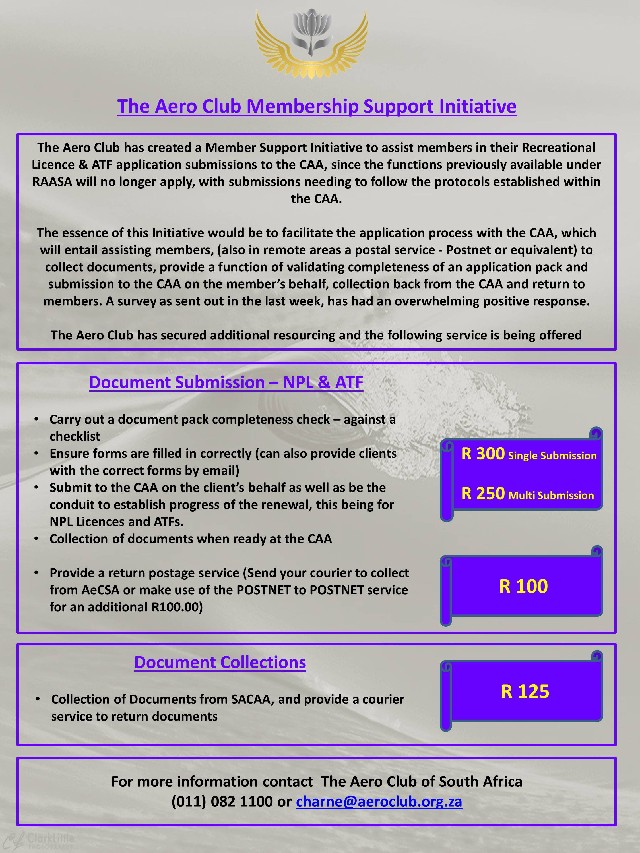





18 - 19: SAC Gauteng Regionals Baragwaneth Airfield. Contact: Annie Boon chunge@mweb.co.za
25: Rand Airport Challenge Rally - Rand Airport. Contact: Frank Eckard e-mail: frank.eckard@mweb.co.za cell: 083 269 1516
25: SAPFA AGM - Time: 2 PM Rand Airport. Contact: Rob Jonkers e-mail: rob@aerosud.co.za cell: 082 804 7032


1: Witbank Speed Rally - Klerksdorp Airfield. Contact: Jonty Esser e-mail: jonty@promptroofing.co.za cell: 082 855 9435
7 - 9: SAPFA Committee Bosberaad - Paddafontein. Contact: rob@aerosud.co.za Cell: 082 804 7032
22: FASHKOSH Stellenbosch.
29: Rally Navigation Training Course - Venue Aerosud. Contact: Mary de Klerk e-mail: maryd@expandingbranding.co.za cell: 084 880 9000


7: Brakpan Fun Rally - Brakpan Airport - Contact: Frank Eckard e-mail: frank.eckard@mweb.co.za cell: 083 269 1516
21: Bethlehem Speed Rally - Heidelberg Airfield - Contact: Jonty Esser e-mail: jonty@promptroofing.co.za cell: 082 855 9435
21: The Airplane Factory Fly-in, Tedderfield. Contact: Shanelle 011 948 9898


OBITUARY CAPTAIN STU LITHGOW
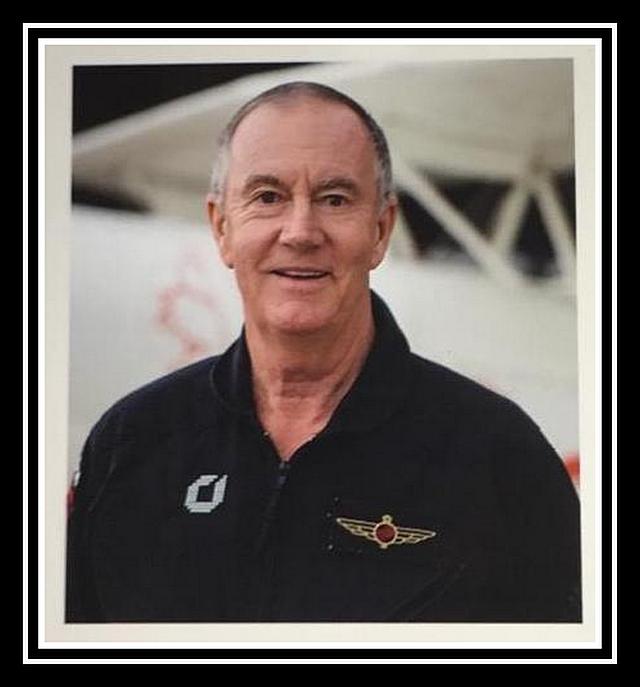
by Theo Truter
On the famous ferry-flight of the retired SAA Boeing 747 from the then named 'Jan Smuts Airport' into Rand Airport, Stu was co-captain.
He was a member of the Flying Lions team, flying at many aerobatic displays.
Stu retired to Plettenberg Bay, where he operated his RV-7 and a SF-25 Falke motor glider.
Stu succumbed to injuries sustained when in the morning of 2 December his Falke suffered an engine out on approach to the field and crashed.
RIP Stu……


In addition, he also wanted the RV-4 to be capable of carrying two 180-pound people up to 6 feet 2 inches tall, and, of course, the airplane had to be something that could be built by the average homebuilder.
The RV-4 prototype first flew in August 1979 and as of October 2019, 1436 RV-4s had been completed and flown worldwide.


Avmax selected the Series 400 based on their extensive legacy de Havilland Twin Otter experience and confidence that the Twin Otter is the only aircraft capable of reliably operating in the extreme environments and limited access restrictions of the contract locations.
"This multi-million-dollar deal is an excellent example of two Western Canadian companies reaching globally to strengthen aviation. This deal was possible due to Avmax's strong collaborative relationships with companies both local and worldwide, including China and Chad," said Mark Maydaniuk, Chief Executive Officer, Avmax. "Aviation continues to thrive globally, with Western Canada being a market leader."
Robert Mauracher, Viking executive vice president Sales & Marketing, added, "Today, more and more operators around the world are recognizing the unique capabilities and versatility of the Series 400 Twin Otter. I am extremely pleased that a world-class Canadian company like Avmax, with their extensive aircraft portfolio and operational expertise, has selected the Twin Otter for their operational needs."

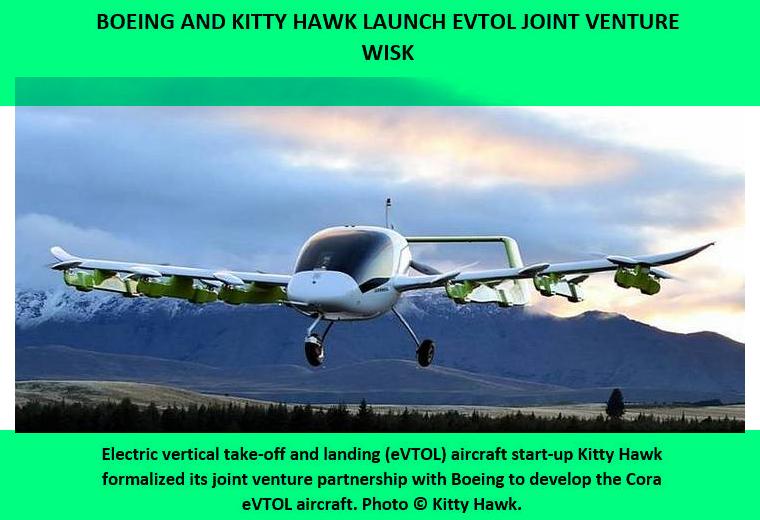
The new company is primarily focused on bringing Kitty Hawk's Cora eVTOL to market. Kitty Hawk has been developing Cora with New Zealand-based Zephyr Airworks, which will now be called Wisk New Zealand.
The Cora eVTOL, a two-seat, all-electric aircraft designed to operate autonomously with a range of up to around 60 miles has conducted more than 700 test flights since early 2017 in New Zeeland.


Eurofighter ECR will be able to provide passive emitter location as well as active jamming of threats, and will offer a variety of modular configurations for electronic attack (EA) and suppression/destruction of enemy air defence (SEAD/DEAD). Latest national escort jammer technology will ensure national control over features such as mission data and data analysis. The concept also features a new twin-seat cockpit configuration with a multi-function panoramic touch display and a dedicated mission cockpit for the rear-seat.
The concept is driven by the leading aerospace companies Airbus, Hensoldt, MBDA, MTU, Premium Aerotec, Rolls-Royce and supported by the German national industry bodies BDSV and BDLI. It specifically targets the German Air Force requirements for an airborne electronic attack capability. Furthermore, it is the single opportunity to deliver such capabilities on the basis of national sovereignty, whilst also securing key military technologies within Germany.
Eurofighter is the backbone of German air defence. With more than 600 aircraft under contract and a workforce of 100.000, it is the largest collaborative defence programme in Europe to date.


This long-term contract aims at increasing the availability of the Caracal and Cougar fleets by making Airbus Helicopters responsible for the entire scope of the aircraft's support. Airbus Helicopters has committed to limiting the number of aircraft in heavy maintenance by reducing the duration of the maintenance cycles for each helicopter type by up to 20%. Additionally, the commitments taken on logistics and technical assistance will reduce the downtime linked to these activities.
"Airbus Helicopters has committed to ambitious performance levels for the support of the Cougar and Caracal helicopters in service in the French Army and Air Force" said Bruno Even, Airbus Helicopters CEO. "This contract is the result of months of cooperation with the DMAé, and I am confident it will deliver the level of support that the French armed forces expect to perform their critical missions both nationally and in operational theatres abroad".
Airbus Helicopters will also propose, in cooperation with its partner Heli Union, a maintenance centre close to one of its customer's sites in Pau, and will also involve a significant number of French SMEs in the equipment repair activities.
The French armed forces operate 18 H225Ms, also known as Caracal in French service missions, as well as 26 Cougars, some of which are currently performing troop transport, special forces and search and rescue missions in demanding theatres of operation worldwide.

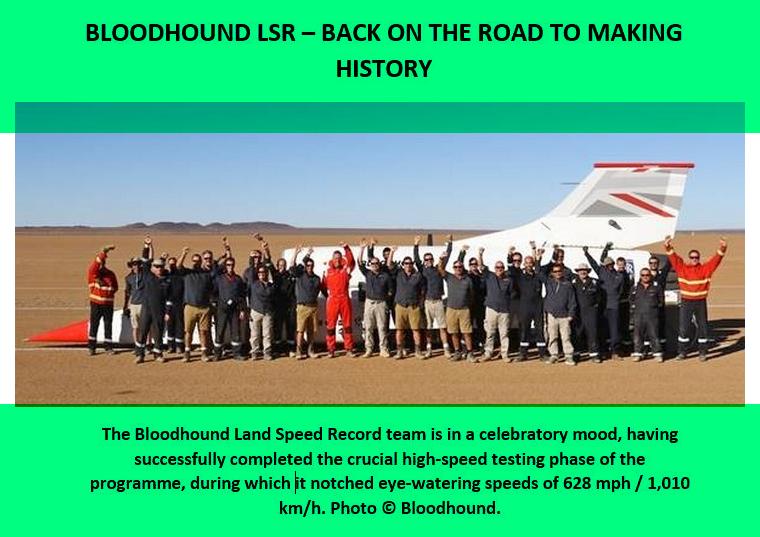
The tests took place on the Hakskeenpan: a dry lakebed in the Kalahari Desert, South Africa. The alkali playa is some 20 km long, and to conduct the tests a 500 m by 16 km strip was cleared of stones and had twenty straight lines painted along its length, creating the desert 'racetrack' on which the Bloodhound LSR car was put through its paces.
Driven by Andy Green, the Bloodhound LSR car reached a maximum speed of 628 mph / 1,010 km/h from a standing start in 50 seconds. Going fast was not, however, the primary aim. The 12 run profiles were designed to develop the team, hone operational processes, deliver crucial data and prepare the car for the record attempt within the next 18 months.
Bloodhound LSR owner Ian Warhurst said: "The global media interest around the high-speed testing has really raised our profile and potential sponsors are getting in touch every day. Our partners will have opportunities to get involved in the next exciting phase of the project as we develop the monopropellant rocket and prepare the car for supersonic speeds.
Even though the high-speed testing was a resounding success, now the real work begins. The team is turning its attention to raising the vital budget necessary to move into the final phase of the programme: attempting a new world land speed record in 12 - 18 months' time, back in South Africa.
The Bloodhound LSR car is currently in a shipping container, heading back to the UK by sea. When it arrives in early January, it'll be returned to the workshop in the heart of SGS Berkeley Green University Technical College, Gloucestershire, where it'll be reassembled into desert spec configuration.
In order to set a new world land speed record, the Bloodhound LSR team needs to fit a rocket on the car. Norwegian aerospace expert Nammo is developing a monopropellant rocket as part of the European Space Agency R&D programme, which will be the perfect fit for the Bloodhound LSR car, slotting easily into the vacant tunnel beneath the EJ200 jet engine. The new rocket will use concentrated hydrogen peroxide (H2O2) which, when passed through a catalyst, decomposes into H2O and oxygen, while generating the several tonnes of thrust needed to blast Bloodhound LSR into the record books.

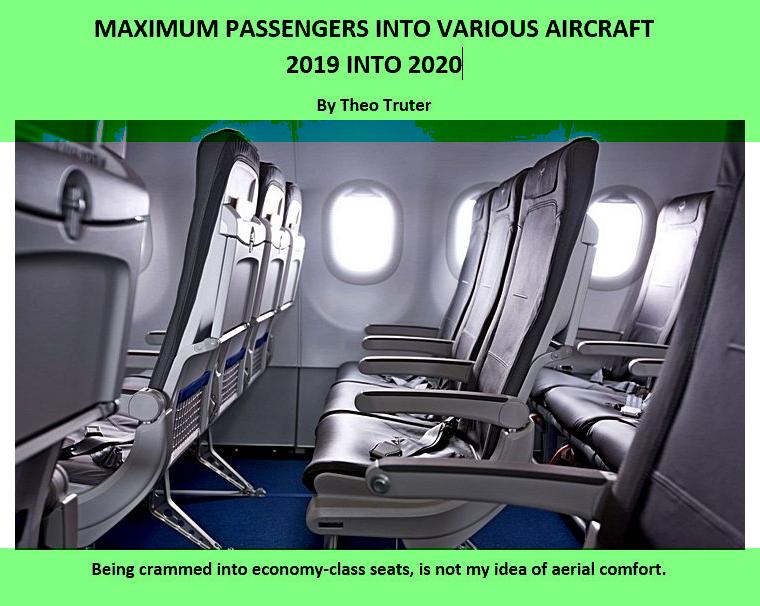
Now imagine flights of 8 to 9 hours duration!
The absolute record number of seats is in the Airbus A-380 of Emirates when they operate it with an all-second class cabin- then it can take a whopping 615 passengers!
One needs to bear in mind that 4-engine aircraft are much more expensive to operate than the new-generation twin-engine replacements now on the market.
Cebu Pacific recently announced at the Paris Air Show, that the number of seats in the new Airbus A330-900 will seat 460, which is a record. Already this airline operates Airbus A330-300's with 436 seats. The seats are placed 2-4-2 but in the -900 will be 3-3-3.
The secret to being able to accommodate these record numbers, is the re-design of exits 2 and 4.
Economy and thus fares all dictate how the marketing of these deals will work.
Other airlines have high -volume seating too. Take note that All-Nippon Airways cram 514 passengers into their domestic Boeing 777-300's and Air France seats 468 in their Boeing 777-300ER' flight to the Caribbean. KLM seats 292 in their Boeing 777-300's.
''Boarding that many passengers, requires airline personnel to call up passengers by row numbers, from front to middle and from rear to middle. Just imagine if the boarding halls are small, how many more halls are required. Also, if buses need to be used, just visualize rows and rows of them lined up.
Just de-planing is also a long, long process, so imagine an emergency evacuation?
A problem encountered with emergency evacuation, is the growing number of passengers insisting in also carrying their cabin-luggage, which greatly impacts speed and often damages the slides ''

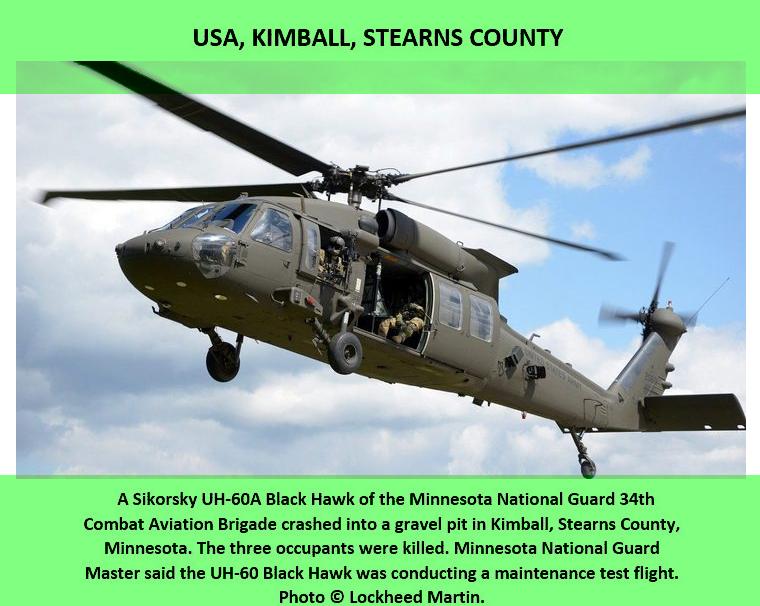
RSA, OR Tambo International: An Airlink AVRO RJ85 on a flight from Harare, Zimbabwe to Johannesburg with 34 passengers and for crew were en route when one of the four engines suffered an uncontained failure which then caused damage to its adjacent engine. Upon assessing the damage and status of the aircraft, the crew elected to continue to Johannesburg where it landed safely under the power of its remaining two engines. All 34 passengers and the four crew members are safe and unharmed.
USA, Boston Logan International: Thirty-one-year-old Sergiu Parfeni of Malden, Massachusetts, got through a security door and into a JetBlue plane's cargo hold at Boston Logan International Airport and was later arrested. He allegedly exited the terminal through an emergency exit door, accessed the tarmac and briefly entered a plane's cargo hold but was immediately removed by JetBlue ground operations employees. A bomb-sniffing dog found nothing hazardous nor suspicious during a sweep of the aircraft, and police haven't found any evidence Parfeni "acted with terrorist intent," Procopio said. Parfeni was booked on charges of trespassing, disorderly conduct and interfering with aircraft operation.


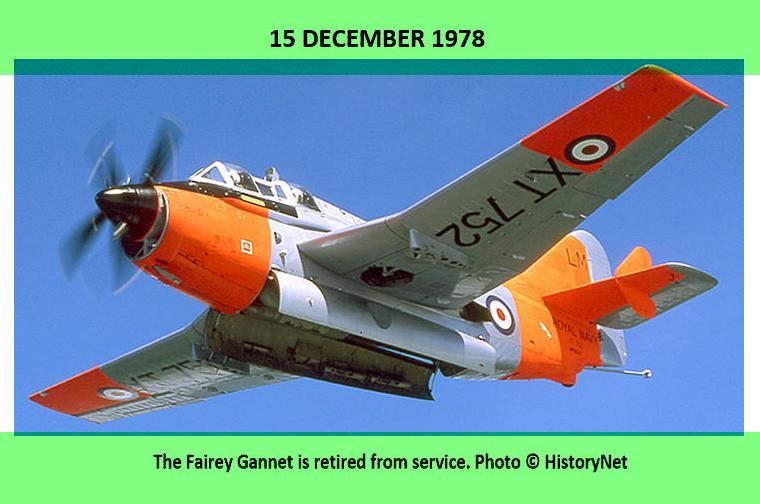
Fairey selected an engine based on the Armstrong Siddeley Mamba turboprop; the Double Mamba (or "Twin Mamba"), two Mambas mounted side-by-side and coupled through a common gearbox to coaxial contra-rotating propellers.
The prototype first flew on 19 September 1949 and made the first deck landing by a turboprop aircraft, on HMS Illustrious on 19 June 1950, by pilot Lieutenant Commander G. Callingham. After a further change in operational requirements and the addition of a radar and extra crew member, the type entered production in 1953 and initial deliveries were made of the variant designated AS.1 at RNAS Ford in April 1954
In 1958 the Gannet was selected to replace the Douglas Skyraider in the AEW role. In order to accommodate the systems required, the Gannet underwent a significant redesign that saw a new version of the Double Mamba installed, new radome mounted under the aircraft, the tailfin increased in area, the undercarriage lengthened and the weapons bay removed. A total of 44 aircraft (plus a single prototype) of the AEW.3 version was produced.

 |
 |
 Copyright © 2024 Pilot's Post PTY Ltd
The information, views and opinions by the authors contributing to Pilot’s Post are not necessarily those of the editor or other writers at Pilot’s Post.
Copyright © 2024 Pilot's Post PTY Ltd
The information, views and opinions by the authors contributing to Pilot’s Post are not necessarily those of the editor or other writers at Pilot’s Post.